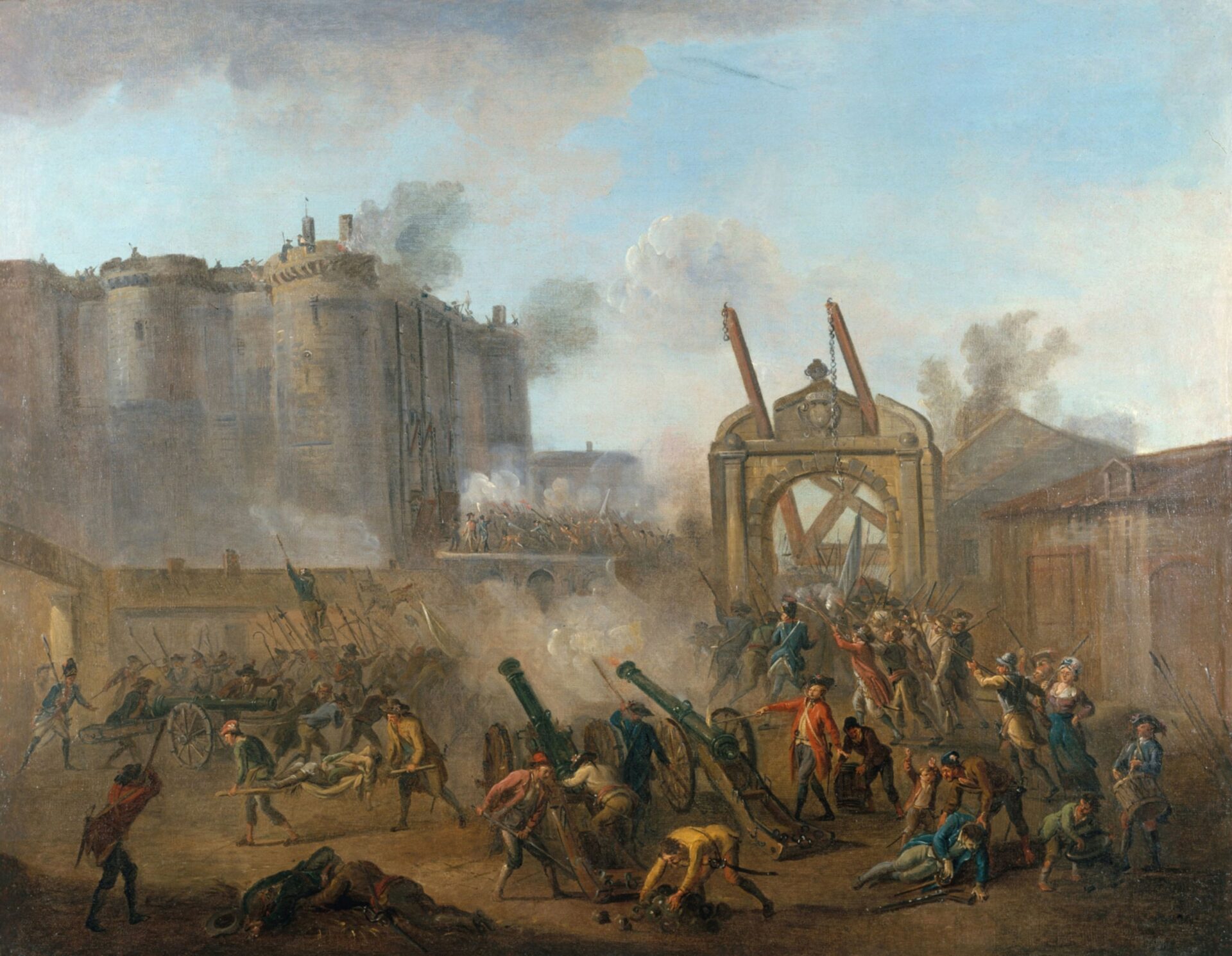Reaction to Necker’s dismissal was immediate. On July 12 and 13 the Parisian electors formed a new municipal government and a new militia, the National Guard, both loyal to the National Assembly. Paris was forging the weapons that made it the leader of the Revolution.
Crowds were roaming the streets, demanding cheaper bread and parading busts of Necker draped in black. On July 14 they broke into government buildings in search of arms. They found one arsenal in the Invalides, the great military hospital, and they hoped to find another in the Bastille, a fortress-prison in the eastern part of the city.
An armed group several hundred strong stormed the Bastille, killing part of the garrison and suffering many casualties themselves. The legend, cherished by defenders of the Old Regime, that participants in the assault were simply “rabble” or a “mob” is untrue. An official list of participants compiled some time after the event showed that most were neighborhood merchants and artisans, especially woodworkers.
The fall of the Bastille was of enormous symbolic significance. Though there were only seven prisoners to be released, all of whom deserved to be in prison, an aroused people had demonstrated what it could accomplish. The capture and subsequent demolition of the Bastille did much to ensure the destruction of the Old Regime, as rioting spread throughout France in July 1789. Thus the Fourteenth of July became the great French national holiday, the counterpart of the American Fourth of July.
Parts of the countryside, meantime, were experiencing the Great Fear, an extraordinary attack of mass delusion. From village to village word spread that “brigands” were coming, aristocratic hirelings who would destroy the now ripe crops and force the National Assembly to preserve the status quo. There were in fact no bands of brigands, only an occasional starving farmhand and, on some occasions, foraging national guardsmen trying to steal food.
But the peasants in several districts went berserk, grabbing hoes and pitchforks, anything resembling a weapon, and driving many of the nobility to flight and ultimately to emigration. They attacked châteaux and broke into other buildings that might house a hoard of grain or the hated documents justifying collection of manorial dues. Some nobles voluntarily gave the peasants what they wanted; others saw their barns and archives burnt; a few were lynched.
The October Days, the last crisis of a tumultuous year, again demonstrated the impotence of Louis XVI and the power of his aroused subjects. The harvest of 1789 had been good, but a drought crippled the operation of watermills for grinding flour from the wheat. Thus, as autumn drew on, Parisians still lined up for bread and still looked suspiciously at the royal troops stationed near their city.
Rumors of the queen’s behavior at Versailles further incensed them: Marie Antoinette made a dramatic appearance at a banquet of royal officers, clutching the heir to the throne in her arms, striking the pose that her mother, Maria Theresa, had employed to win the support of the Hungarians in the 1740s. And on hearing that the people had no bread, she was reported to have remarked callously, “Let them eat cake.” This story was false, but it was repeated in the lively new Paris papers that delighted in denouncing the queen.
The climax came on October 5, when an array of determined marketwomen and fishwives, neatly dressed milliners, and even middle-class “ladies with hats” marched from Paris to Versailles in the rain to demand bread.
They disrupted the National Assembly and penetrated the palace, where they might have lynched Marie Antoinette if she had not taken refuge with the king. The next day the women marched back to Paris, escorting the royal family, who took up residence in the Tuileries Palace. More important, the National Assembly also moved to Paris.

